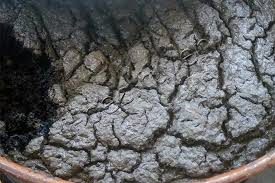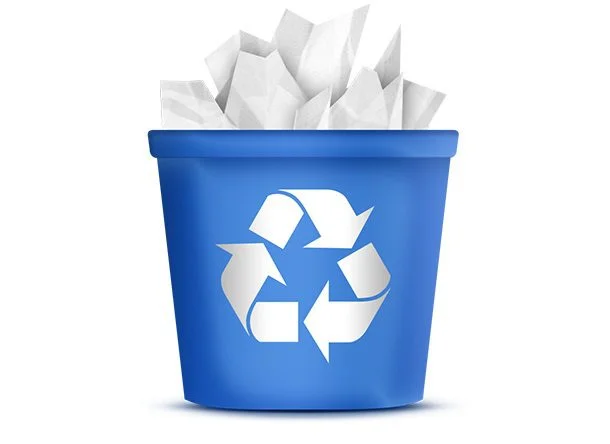Products That Can Be Derived From Sludge
There are many products that can be derived from sludge as explained in this article. Sludge is a semi-solid material that is typically generated as a byproduct of various industrial processes.
It is composed of a mixture of solids and liquids, and may contain a range of organic and inorganic compounds, including heavy metals, pathogens, and other contaminants. Sludge is typically generated during wastewater treatment, industrial manufacturing, and mining operations, among other processes.
The management of sludge is a significant challenge for many industries, as it can be difficult to handle and dispose of safely. Sludge can pose a risk to human health and the environment if not managed properly, and there are various regulations and guidelines in place to ensure its safe disposal.
One common method of sludge management is dewatering, which involves the removal of water from the sludge to produce a more manageable and transportable material. This can be achieved through a range of mechanical and chemical processes, including centrifugation, filtration, and the use of chemical flocculants.
Once dewatered, sludge can be further processed or disposed of, depending on its composition and intended use. For example, some sludge may be suitable for use as a fertilizer or soil amendment, while others may require more extensive treatment before they can be safely disposed of in a landfill or incinerated.
The management of sludge requires careful consideration of a range of factors, including its composition, volume, and potential environmental and health impacts. As such, it is important for industries that generate sludge to work closely with regulatory bodies and environmental experts to ensure that their sludge management practices are safe and compliant with relevant regulations and guidelines.
Products That Can Be Derived From Sludge

Sludge, which is a semi-solid residue produced during the treatment of wastewater, can be processed and converted into various products that can be used in different industries. Here are some examples of products that can be derived from sludge:
(1) Fertilizers
Sludge can be processed and converted into fertilizers that are rich in nutrients like nitrogen, phosphorus, and potassium, which are essential for plant growth.
Fertilizers from sludge have emerged as a promising alternative to traditional chemical fertilizers due to their cost-effectiveness, environmental benefits, and high nutrient content. Sludge is the solid or semi-solid residue generated from wastewater treatment processes, which contains a significant amount of organic and inorganic matter.
The production of fertilizers from sludge involves the processing of sludge into a stable, pathogen-free, and nutrient-rich product that can be used as a soil amendment. The process typically involves a series of steps, including dewatering, stabilization, and composting.
Dewatering involves the removal of excess moisture from sludge to increase its solids content, while stabilization involves the conversion of organic matter in sludge into a stable form that is resistant to biodegradation. Composting, on the other hand, involves the biological degradation of organic matter in sludge under controlled conditions, resulting in a nutrient-rich material that can be used as a fertilizer.
Fertilizers from sludge offer several advantages over traditional chemical fertilizers. Firstly, they are cost-effective since they are produced from a waste product that would otherwise need to be disposed of.
Secondly, they are environmentally sustainable since they reduce the amount of sludge that is sent to landfills and the need for chemical fertilizers that can harm the environment. Finally, fertilizers from sludge are high in nutrients such as nitrogen, phosphorus, and potassium, which are essential for plant growth.
(2) Biogas
Sludge can be used to produce biogas through anaerobic digestion, which is a process that breaks down organic matter in the absence of oxygen. Biogas can be used as a renewable energy source for heating, cooking, or generating electricity.
Biogas from sludge is a renewable energy source that has gained increasing attention in recent years due to its potential to reduce greenhouse gas emissions, improve waste management, and provide a source of clean energy.
The process of producing biogas from sludge involves the anaerobic digestion of organic matter, which results in the generation of a mixture of methane and carbon dioxide gases.
Sludge, which is the residual product of wastewater treatment processes, is a complex mixture of organic and inorganic substances. This mixture can be difficult and costly to dispose of, as it contains significant amounts of nutrients, pathogens, and other contaminants that can have adverse environmental and public health effects. However, through the process of anaerobic digestion, sludge can be converted into a valuable resource in the form of biogas.
The process of biogas production from sludge typically involves several stages. First, sludge is collected and processed to remove any large particles or debris. Then, it is transferred to an anaerobic digester, which is a closed container where the sludge is heated and mixed with bacteria that break down the organic matter.
As the bacteria consume the organic matter, they release methane and carbon dioxide gases, which are collected and stored in a biogas storage tank. The resulting biogas can be used directly as a fuel source or processed further to remove impurities and increase its energy content.
The benefits of biogas production from sludge are numerous. It provides a source of renewable energy that can be used to generate electricity, heat, or fuel for transportation. This reduces reliance on fossil fuels and helps to mitigate greenhouse gas emissions. Additionally, the process of anaerobic digestion reduces the volume and pathogenicity of the sludge, making it easier and safer to dispose of. The resulting digestate can also be used as a fertilizer, further reducing waste and providing a source of nutrients for agriculture.
Biogas production from sludge is a promising technology that can help to address a range of environmental and waste management challenges. By converting a waste product into a valuable resource, it offers a sustainable and economically viable solution for meeting energy needs and reducing greenhouse gas emissions. As such, it represents an important area of research and development for the future.
(3) Construction materials
Sludge can be used to produce construction materials like bricks and tiles. When sludge is mixed with other materials like sand and cement, it can create a strong and durable material that can be used in construction.
Construction materials from sludge are an innovative and sustainable approach to building materials. Sludge is a byproduct of wastewater treatment plants, which traditionally ends up being disposed of in landfills. However, with advancements in technology and sustainability practices, sludge can now be repurposed into materials that can be used in construction.
One example of a construction material that can be made from sludge is bricks. These bricks are made by mixing sludge with other materials such as clay, sand, and lime. The mixture is then molded into the shape of a brick and fired in a kiln. The resulting brick is strong and durable, with similar properties to traditional fired clay bricks.
Another construction material that can be made from sludge is concrete. This process involves using sludge ash, which is the residue left over after incinerating sludge. Sludge ash is mixed with cement and other materials to create a concrete-like material that is strong and durable. This material can be used in a variety of construction applications, including roadways, sidewalks, and building foundations.
One of the benefits of using construction materials made from sludge is that it reduces waste and promotes sustainability. Instead of being disposed of in landfills, sludge can be repurposed into materials that are useful in construction. Additionally, these materials are often less expensive than traditional materials, making them an attractive option for construction projects.
However, it is important to note that there are some challenges associated with using construction materials made from sludge. For example, there may be concerns around the safety and quality of the materials, particularly when it comes to their potential impact on human health and the environment. It is therefore crucial to carefully evaluate and monitor the production and use of these materials to ensure that they meet the necessary safety and quality standards.
Construction materials made from sludge are an innovative and sustainable approach to building materials. They offer a promising solution to reducing waste and promoting sustainability in the construction industry. While there are challenges to be addressed, continued research and development in this field have the potential to yield significant benefits for both the industry and the environment.
(4) Compost
Sludge can be processed and converted into compost, which is a nutrient-rich soil amendment that can be used to improve soil fertility and plant growth. Composting is a natural process that transforms organic waste into a nutrient-rich soil amendment.
Sludge, the semi-solid by-product of wastewater treatment, can be an excellent source of organic matter for composting. When properly treated and composted, sludge can be transformed into a high-quality compost that is rich in nutrients and beneficial microorganisms.
The process of composting sludge involves carefully managing the conditions under which the composting takes place. This includes managing the temperature, moisture content, and oxygen levels to create an environment that encourages the growth of beneficial microorganisms while minimizing the risk of pathogens and odors.
The first step in composting sludge is to properly treat it to remove any harmful pathogens or contaminants. This can be done through a variety of methods, including thermal treatment, chemical treatment, or biological treatment. Once the sludge has been treated, it can be mixed with other organic materials such as yard waste, food scraps, or agricultural waste to create a balanced compost mixture.
The composting process typically takes several months to complete, during which time the compost pile must be carefully monitored and managed. This involves regularly turning the compost pile to ensure that oxygen levels remain high and the composting process continues to progress. The temperature and moisture levels of the compost pile must also be carefully monitored and adjusted as needed to ensure optimal conditions for composting.
Once the composting process is complete, the resulting compost can be used as a soil amendment in a variety of applications, including agriculture, landscaping, and gardening. Compost from sludge is particularly beneficial for improving soil fertility, increasing water retention, and promoting healthy plant growth.
Read Also: Products That Can Be Derived From Slag
Composting sludge can be a highly effective way to transform a waste product into a valuable resource. By carefully managing the composting process, sludge can be transformed into a high-quality compost that is rich in nutrients and beneficial microorganisms. This compost can then be used to improve soil health and promote healthy plant growth, making it an ideal choice for a wide range of applications.
(5) Animal feed
Sludge can be processed and converted into animal feed. It contains high levels of protein, which is essential for animal growth and development. Animal feed from sludge is a viable and sustainable solution to address the issue of waste management and animal nutrition simultaneously. Sludge is the residue generated during the treatment of wastewater in sewage treatment plants. It contains a significant amount of organic matter, nutrients, and minerals, which can be utilized as a valuable resource for animal feed production.
The production of animal feed from sludge involves several steps, including dewatering, drying, and pelleting. The dewatering process involves the removal of excess water from the sludge, which reduces its volume and increases its concentration of solids. Drying the sludge further removes moisture and stabilizes the organic matter. Finally, the dried sludge is compressed into pellets, which can be used as a feed ingredient for animals.
The use of sludge as a feed ingredient offers several advantages. Firstly, it reduces the amount of waste that needs to be disposed of, thereby reducing the environmental impact of wastewater treatment.
Secondly, it provides a low-cost alternative to traditional animal feed ingredients, such as corn and soybean meal, which are often expensive and subject to price volatility. Thirdly, sludge contains valuable nutrients, such as nitrogen and phosphorus, which can contribute to animal growth and health.
However, the use of sludge as a feed ingredient also poses some challenges. Sludge must be properly treated and processed to remove any potential contaminants, such as heavy metals or pathogens, which could pose a risk to animal health. Additionally, the use of sludge as a feed ingredient must be carefully monitored to ensure that it does not negatively impact animal performance or product quality.
Animal feed from sludge offers a sustainable solution for waste management and animal nutrition. The production of animal feed from sludge requires careful attention to processing and monitoring to ensure its safety and effectiveness. With proper management and regulation, the use of sludge as a feed ingredient can provide a low-cost and environmentally friendly alternative to traditional animal feed ingredients.
(6) Raw materials for industrial processes
Sludge can be processed and converted into raw materials for industrial processes, such as the production of cement or paper. Raw materials play a crucial role in the industrial sector, as they are the basic components used in the production of various goods and services. In recent years, the use of sludge as a source of raw materials for industrial processes has gained significant attention due to its potential to mitigate environmental pollution and reduce waste disposal costs.
Sludge is a semi-solid residue that is produced during the treatment of wastewater. It contains a mixture of organic and inorganic materials, including solids, water, and microorganisms. While sludge is often considered a waste product, it can be processed and converted into useful raw materials for industrial processes.
Read Also: Products That Can Be Derived From Fly Ash
One example of the use of sludge as a raw material is in the production of biofuels. Sludge contains a high amount of organic matter, which can be processed using anaerobic digestion to produce biogas. Biogas is a renewable energy source that can be used as a substitute for fossil fuels, thereby reducing greenhouse gas emissions and improving energy security.
Another application of sludge as a raw material is in the production of fertilizers. Sludge contains a significant amount of nitrogen, phosphorus, and other nutrients, which can be extracted and processed into fertilizers. This reduces the need for synthetic fertilizers, which are often produced using non-renewable resources and contribute to environmental pollution.
Sludge can also be used in the production of building materials. The high content of clay minerals in sludge makes it suitable for use in the production of bricks, tiles, and other building materials. This reduces the demand for natural resources such as clay, sand, and gravel, thereby reducing the environmental impact of the construction industry.
Sludge is a valuable source of raw materials for industrial processes. By processing sludge, we can reduce waste disposal costs, mitigate environmental pollution, and conserve natural resources. The use of sludge as a raw material is a promising avenue for sustainable development, and it is important that we continue to explore its potential in various industrial applications.
(7) Chemicals
Sludge can be processed and converted into chemicals, such as organic acids and bioplastics. Chemicals from sludge refer to a class of chemical compounds that can be extracted from sewage sludge, which is the solid byproduct of wastewater treatment. These chemicals can have a range of industrial applications, including use as fertilizers, fuel, and raw materials for the production of various chemicals.
The extraction of chemicals from sludge typically involves a series of processes, including sludge conditioning, chemical extraction, and purification. During sludge conditioning, the sludge is treated with chemicals to enhance the extraction process and improve the quality of the extracted chemicals. Chemical extraction is then performed using various methods, such as solvent extraction or acid leaching, to isolate the desired chemicals from the sludge.
The chemicals that can be extracted from sludge include organic compounds, such as lipids and proteins, as well as inorganic compounds, such as phosphorus and nitrogen. These chemicals can be further processed to produce various products, such as bioplastics, biofuels, and biosurfactants.
One of the main benefits of extracting chemicals from sludge is that it provides a source of renewable resources that can be used to replace non-renewable resources, such as fossil fuels. This can help reduce the environmental impact of industrial processes by reducing greenhouse gas emissions and reducing dependence on non-renewable resources.
Moreover, extracting chemicals from sludge can also help reduce the volume of sludge that needs to be disposed of, thus reducing the environmental impact of wastewater treatment. This can be particularly important in areas where land is scarce and expensive, as well as in areas where regulations on sludge disposal are strict.
The extraction of chemicals from sludge has the potential to provide a range of benefits, including the production of renewable resources, the reduction of waste, and the reduction of the environmental impact of industrial processes.
While there are challenges associated with this process, such as the high cost of extraction and purification, ongoing research is helping to overcome these challenges and make chemicals from sludge a viable and sustainable option for a range of industrial applications.
Read Also: Starting a Business in PA: A Step-by-Step Guide


